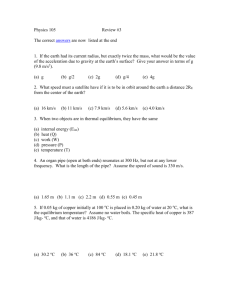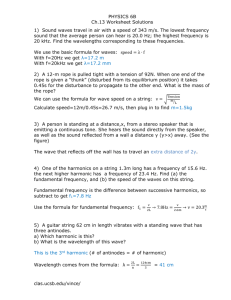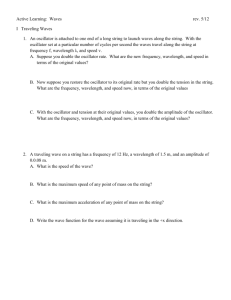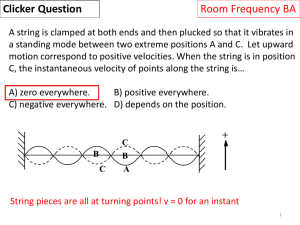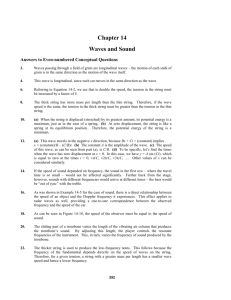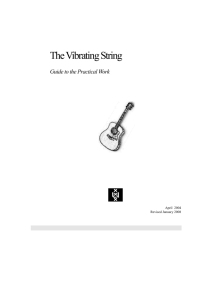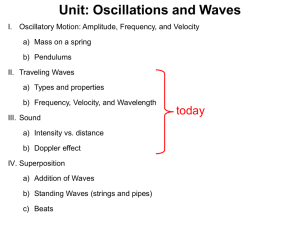Waves Worksheet: Frequency, Wavelength, and Speed
advertisement
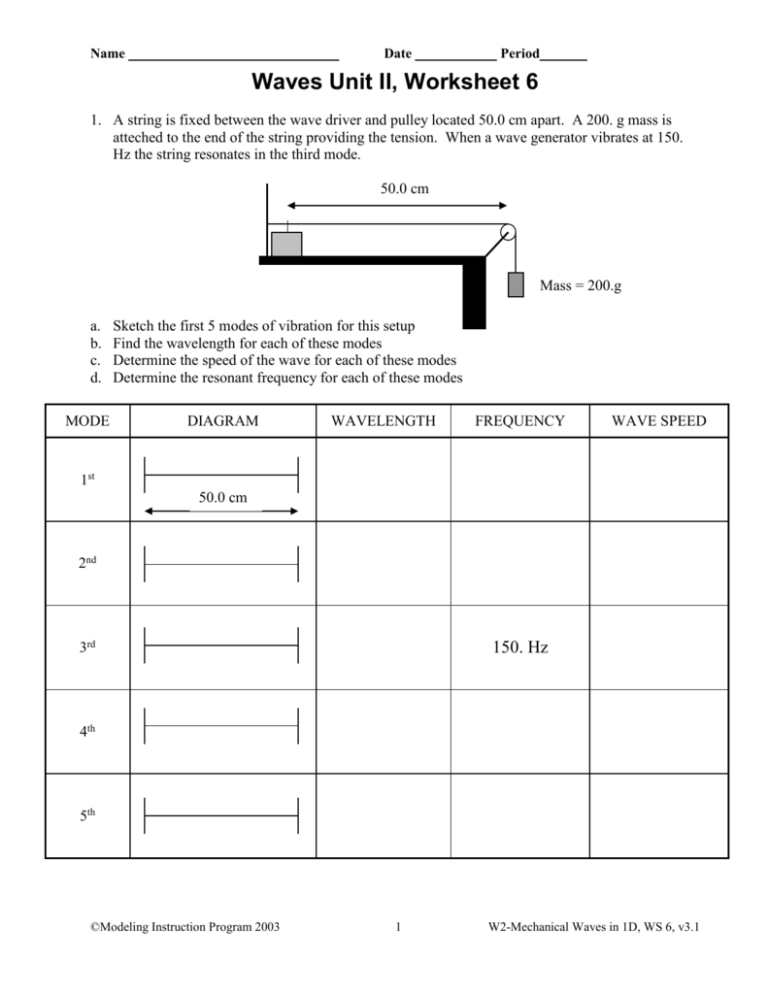
Name Date Period Waves Unit II, Worksheet 6 1. A string is fixed between the wave driver and pulley located 50.0 cm apart. A 200. g mass is atteched to the end of the string providing the tension. When a wave generator vibrates at 150. Hz the string resonates in the third mode. 50.0 cm Mass = 200.g a. b. c. d. MODE Sketch the first 5 modes of vibration for this setup Find the wavelength for each of these modes Determine the speed of the wave for each of these modes Determine the resonant frequency for each of these modes DIAGRAM WAVELENGTH FREQUENCY WAVE SPEED 1st 50.0 cm 2nd 3rd 150. Hz 4th 5th ©Modeling Instruction Program 2003 1 W2-Mechanical Waves in 1D, WS 6, v3.1 2. The same string is attached to a hanging mass of 400 g. The linear density and the length of the string have not changed. a. Find the linear density for the string. b. Complete the chart for the first four modes of vibration. MODE 1st DIAGRAM WAVELENGTH FREQUENCY WAVE SPEED 50.0 cm 2nd 3rd 4th 3. Eric Clapton plucks a C on a guitar string, which causes a fundamental frequency of 261 Hz. The wave travels down the string at 400. m/s. a. Draw a picture of the standing wave. If the linear density of the string is .417g/m, what is the tension on the string? b. Determine the wavelength of the wave. 4. Describe some factors that a guitar player can change to vary the frequency (pitch) of the sound produced by a guitar. Describe the change that each one would produce in the pitch of the sound. (Hint: you should be able to identify four changes that affect the pitch.) ©Modeling Instruction Program 2003 2 W2-Mechanical Waves in 1D, WS 6, v3.1





